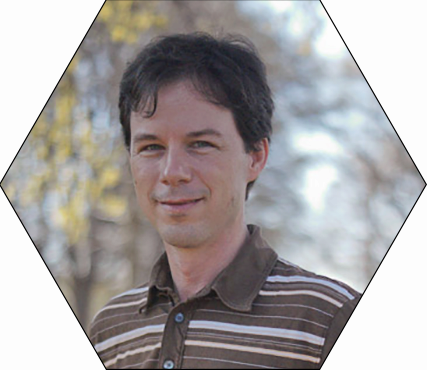Education
- Ph.D. (Applied Physics), Stanford University, 2002
- M.S. (Applied Physics), Stanford University, 2000
- B.A. (Physics and Mathematics), Johns Hopkins University, 1996
Background
Dr. Sulchek developed improvements for high-speed atomic force microscopy before focusing on measurement in biological systems. Dr. Sulchek started at Georgia Tech in June 2008 as an Assistant Professor. Prior to his current appointment, he was a staff scientist at Lawrence Livermore National Lab. He was promoted to full Professor in 2019.
Research
- Bioengineering and Micro and Nano Engineering: Atomic force microscopy, pathogen adhesion and endocytosis, cell biomechanics, single molecule biophysics, drug delivery and targeting, cell membrane mimetics, biosensors
Dr. Sulchek's research focuses primarily on the measurement and prediction of how multiple individual biological bonds produce a coordinated function within molecular and cellular systems. There are two complementary goals. The first is to understand the kinetics of multivalent pharmaceuticals during their targeting of disease markers; the second is to quantify the host cell signal transduction resulting from pathogen invasion. Several tools are developed and employed to accomplish these goals. The primary platform for study is the atomic force microscope (AFM), which controls the 3-D positioning of biologically functionalized micro- and nanoscale mechanical probes. Interactions between biological molecules are quantified in a technique called force spectroscopy. Membrane protein solubilized nanolipoprotein particles (NLPs) are also used to functionalize micro/nano-scale probes with relevant biological mediators. This scientific program requires the development of enabling instrumentation and techniques, which include the following:
- Advanced microscopy and MEMs;
- Nanomechanical linkers, which provide a convenient platform to control biomolecular interactions and study multivalent molecular kinetics;
- Biological mimetics, which provide a simple system to study cell membranes and pathogens.
Ultimately, this work is used to optimize molecular drug targeting, improve chem/bio sensors, and develop more efficient pathogen countermeasures. Dr. Sulchek continues to work closely with talented researchers across disciplines at Lawrence Livermore National Lab and other institutions. Students will be trained in areas of bio/nanotechnology with applications in cutting edge academic, government, and corporate research centers.

Figure 1: Visualization of force microscopy measurement of several antibody fragments used in cancer therapies that are attached to the AFM tip. They are depicted unbinding from cancer-indicating protein targets immobilized upon a flat surface with the application of a picoscale force.
- National Science Foundation CAREER Award, 2011
- Lawrence Livermore National Lab
- Excellence in iPublication Award, 2006
- Physical Biosciences Fellow, 2003-2006
- Consultant for Project Impact, in making affordable intraocular lenses, 2004-2005
Representative Publications
- C. Blanchette, et al. 2008. Quantifying Size Distributions of Nanolipoprotein Particles (NLPs) with Single Particle Analysis and Molecular Dynamic (MD) Simulations. Journal of Lipid Research 49, 1420.
- T. Sulchek, R.W. Friddle, and A. Noy. 2006. Strength of Multiple Parallel Biological Bonds. Biophysical Journal 90, 4686.
- T. Sulchek, et al. 2005. Dynamic Force Spectroscopy of Parallel Individual Mucin1-Antibody Bonds. Proceedings of the National Academy of Sciences 102, 16638.
- L. A. Pinnaduwage, et al. 2003. A Microsensor for Trinitrotoluene Vapour. Nature 425, 474.
- T. Sulchek, et al. 2000. High-Speed Tapping Mode Imaging with Active Q Control for Atomic Force Microscopy.Applied Physics Letters76, 1473.

